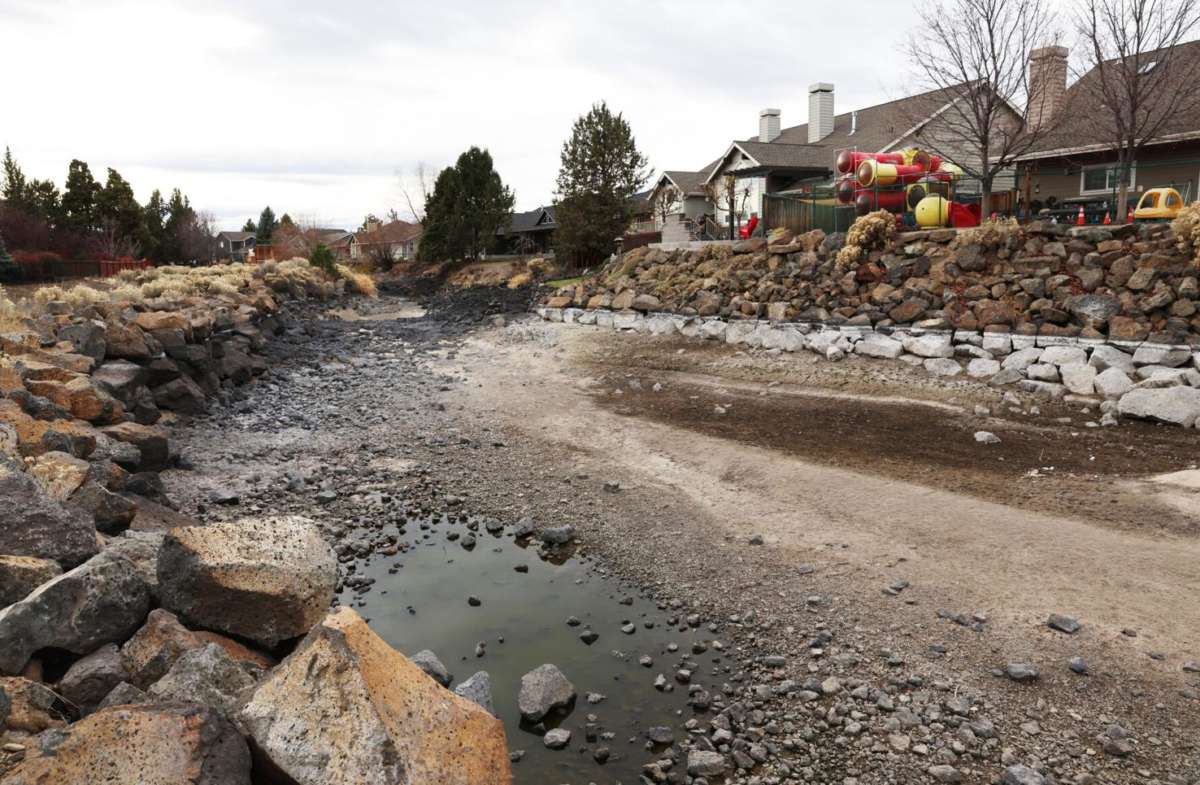This article was published on: 12/3/21 10:15 PM
$250 million is needed to pipe the canal from Bend to Redmond
For more than a century the Pilot Butte Canal, an open waterway that funnels irrigation water from Bend to Redmond, has been a regular feature of the High Desert landscape. President Joe Biden’s Infrastructure Investment and Jobs Act could change that.
Central Oregon Irrigation District, which maintains the canal, is preparing to tap into the infrastructure bill for funds to pipe the 22-mile long canal.
Craig Horrell, the general manager of the district, said if funds become available work could start next year.
Converting canals to modern pipelines helps irrigation districts achieve the water savings they need to stay in compliance with the Deschutes Basin Habitat Conservation Plan. The plan, finalized last year after 12 years of development, calls for districts to raise the level of the Deschutes River in winter to support Oregon spotted frog habitat. Horrell said the easiest way to do that is to pipe the canals, which are notorious for losing water into the porous Central Oregon soil.
Completion of an environmental impact statement is one of the steps that must be completed before the district can apply for funds, said Horrell.
“We feel like we are shovel ready in a year, so we do believe we will be able to capture some of that money for these piping projects,” said Horrell. “But we have to complete the permitting process, which includes the EIS and public meetings.”
The cost to pipe the Bend to Redmond section of the canal could reach $250 million and will take seven to 10 years to complete, said Horrell.
Central Oregon Irrigation District is currently piping a 7.9-mile section of the Pilot Butte Canal between Redmond and Smith Rock. The $30 million project, scheduled for completion in April, will save 30 cubic feet of water per second.
Piping the Bend to Redmond stretch will save an additional 156 cfs, said Horrell. The amount of water conserved annually by piping the Bend-to-Redmond segment will be over 90,000 acre-feet, which is almost half of Wickiup Reservoir.
Horrell anticipates that once the Pilot Butte Canal is fully piped, the irrigation districts can increase the release of water into the Deschutes River to 300 cfs, a significant jump from current winter releases of 105 cfs.
According to the U.S. Fish and Wildlife Service, higher winter flows in the Deschutes River inundate a greater area of the river channel, potentially shortening the distance that frogs travel to spring breeding areas. Flows greater than 300 cfs may also create additional overwintering areas for frogs.
The Habitat Conservation Plan requires that winter releases reach 300 cfs by 2028 and 400 cfs by 2033. Horrell said that increase can be achieved through on-farm water efficiency programs, such as converting farms from flood irrigation to pivot sprinkler systems.
“Once this thing is piped, pressurized water deliveries will really help us with that extra hundred,” said Horrell.
Piping the canal is not without controversy. The canal runs behind more than 100 houses in northwest Bend, and some residents have tried in the past to prevent the canal from being piped in order to keep the waterway alive.
In 2016, action by residents prompted the National Park Service to list a 1.5-mile segment of the canal in Bend on the National Register of Historic Places. That means the canal can stay but doesn’t require water has to run through it. Horrell explains that the pipe can be placed in the dry canal or can be rerouted along a different route. That would leave the canal intact but without water.
Jeff Perreault, one of the homeowners whose property backs up to the canal, said he is not aware of any current legal action against the irrigation district, but all eyes are on its current piping plans.
“I’m confident that if COID attempted to violate the historic district then they’d have a fight on their hands,” said Perreault. “It appears that they’re taking the right approach, which would be to pipe around the district, and they should be applauded for that.”
Organizations that have been critical of the main canal piping projects include the nonprofit Central Oregon LandWatch, which says the irrigation districts can get more bang for their buck by focusing their efforts on on-farm conservation and the piping of smaller ditches and laterals.
Tod Heisler, director of the rivers conservation program at Central Oregon LandWatch, says a major problem with the open laterals is that water often runs off the end of the ditch, but piping lateral ditches would prevent that from happening. It would also allow meters to be installed at each farm on the ditch.
“Then you can invest in more efficient irrigation, such as moving from flood to sprinklers, and have better control over the water for potential water marketing transactions,” said Heisler. “Real progress can only be made when COID insists that patrons reduce water waste.”




